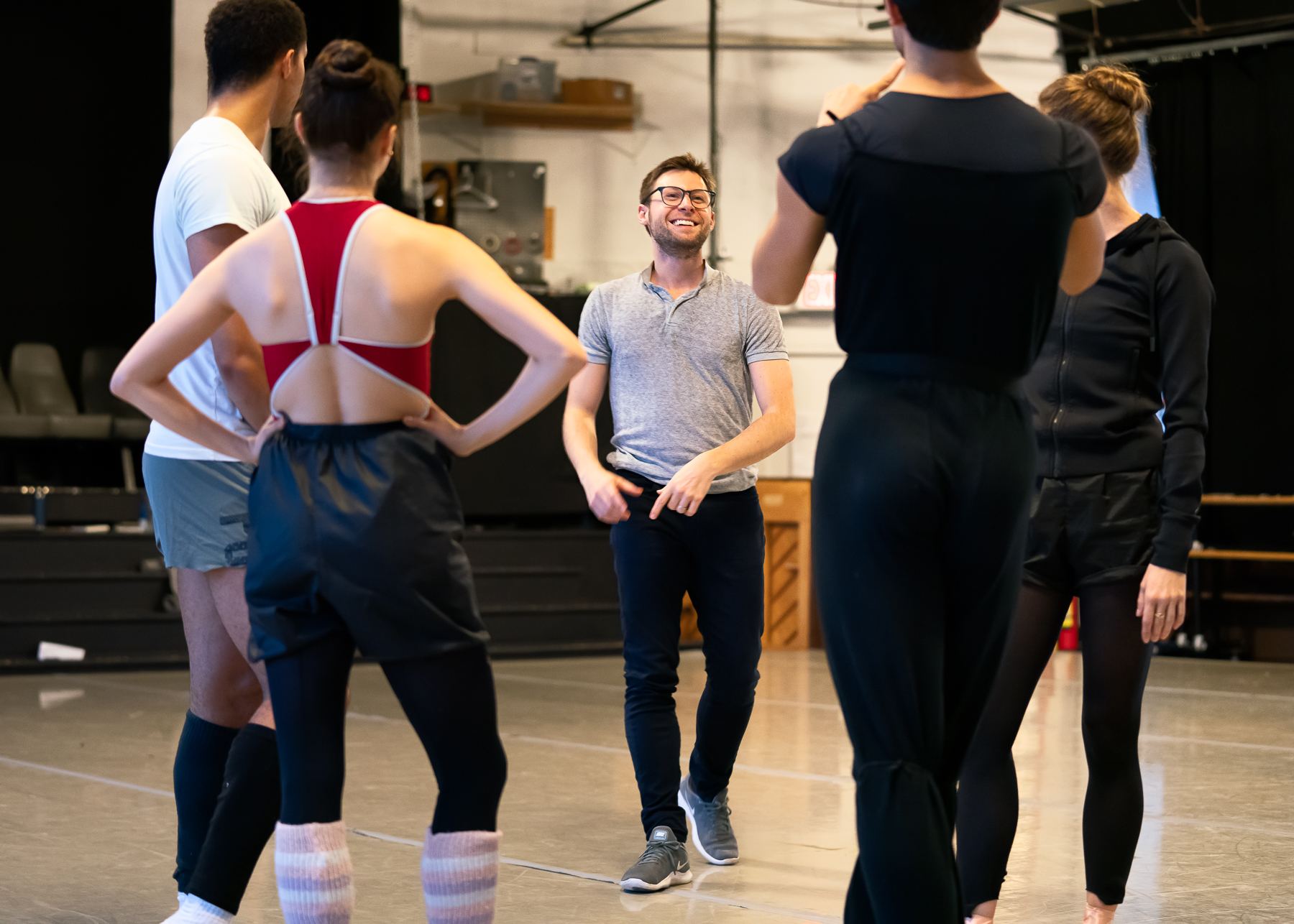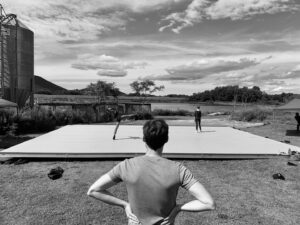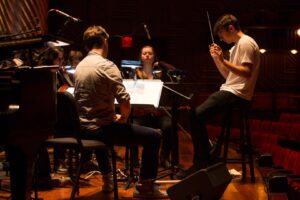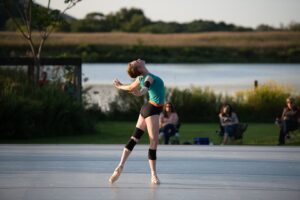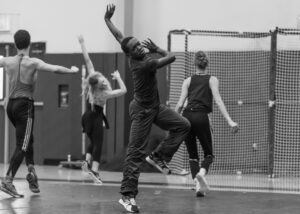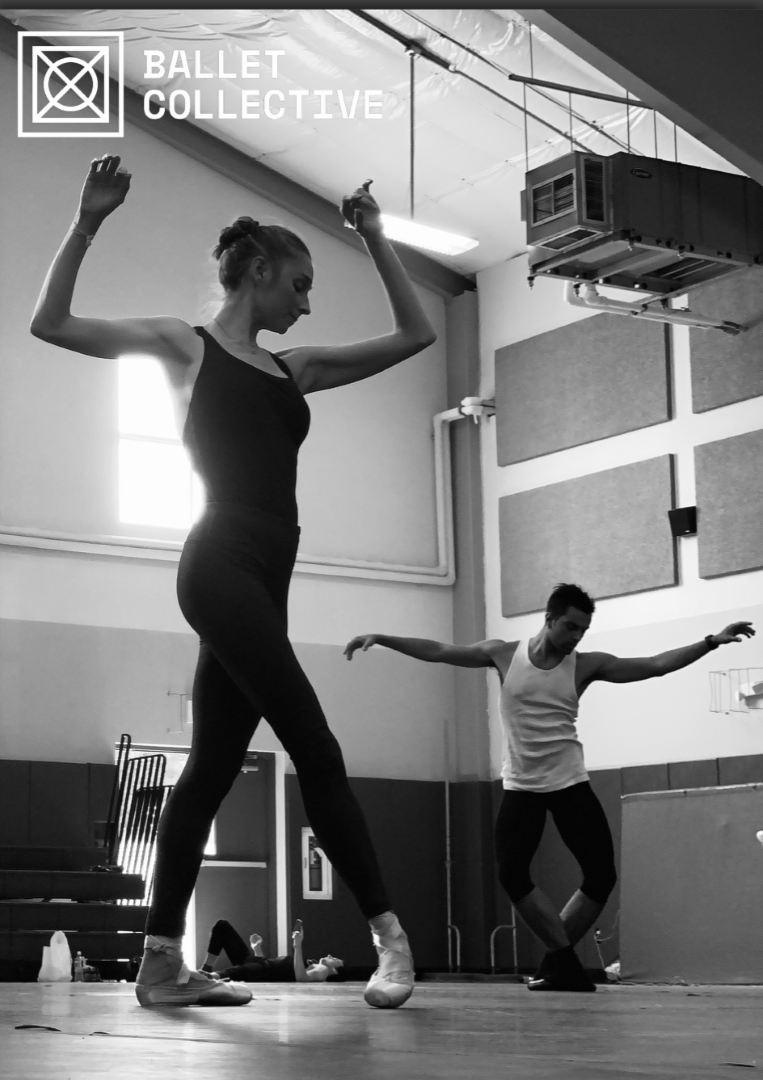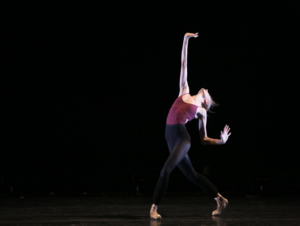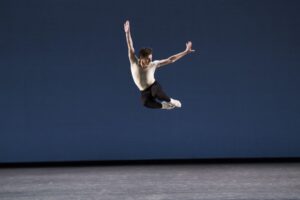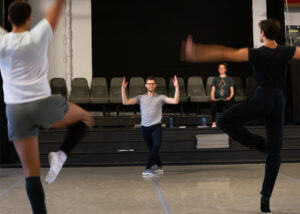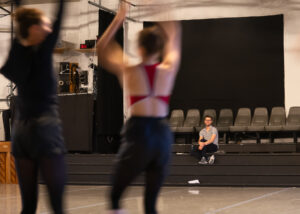In this insightful discussion with dance curator and teacher Catherine Tharin, Troy Schumacher, the founder and director of Ballet Collective talks about the personal and complex process of becoming a professional choreographer.
When did you begin choreographing?
I made a small, short ballet in 2009 on some pre-professional students in Atlanta to see if I enjoyed choreographing in a low-pressure environment.
You are both a dancer and a choreographer and each pursuit requires different skills. How does your dancing inform your choreography? What does each ‘give’ you? Has choreographing changed your dancing? Do your choreographic skills ‘instruct’ your dancing skills, especially when choreographers choreograph on you?
When I began choreographing professionally, I was greatly surprised at how different dancing and choreography are both physically and mentally. As a dancer you develop and hone patterns of motion through years and years of repetition both through practicing technique and dancing a specific repertory. Those patterns become ingrained in your brain through muscle memory. As a choreographer, there’s not currently a better way of conveying movement than physically demonstrating. Someday that might change, but for now, who a choreographer is as a dancer, inevitably becomes a major part of their dances’ styles.
Once I began choreographing, I began to look at dancing in an entirely different way. It’s very easy for the act of dancing ballet to be a very self-centered one. Most of the time dancers are, justifiably, thinking mostly of themselves and their own performances of a ballet, rather than how to best be a part of a ballet. As I began choreographing and directing my ballets, I began to think more of how to best serve the ballets I was dancing in and the way the role I was dancing fit into the larger picture. Learning ballets also became significantly easier.
How does a choreographer find their own way after working intensively with the choreographic vocabulary, structures, et al, established by an influential choreographer, such as Balanchine, whose dances have infused your body? Do you push away known choreographic impulses or allow those impulses to direct you?
Early on, I would go into a studio and exhaust all of the generic impulses that came to my mind as a dancer before I could respond to a ballet as a choreographer. Now, often the choreographer in me responds first. Then the dancer eventually begins to take over once mental fatigue sets in. I try to be most aware and document myself earlier on as I am sketching out movements.
I don’t spend too much time trying to shake my influences. It’s my history and I’m proud to have been a part of it. I try to learn from dance’s past and find new, compelling ways forward. I don’t think there are many situations where you can conscientiously choreograph the same type of ballet Balanchine would. The world has changed, we already have those masterpieces, and it wouldn’t be a relevant usage of the great resources it takes to choreograph a new ballet.
What attracts you to a dancer? Which qualities?
I highly prize individualism in dancers. I am more attracted to the differences between humans than the similarities. So, someone that can always make “something” out of any movement. On top of that, I love showing qualities that only highly trained dancers can exhibit, especially musical athleticism.
Describe your choreographic process? Do dancers offer ideas? How open are you to outside ideas, if ideas are offered? What attracts you to your collaborators?
In most instances, I am a very musically driven choreographer. I can read music and play piano and spend the vast majority of my prep time listening to whatever music I am working with, parsing the music’s overall structure, its phrasing, what can be built on top of it, its emotional power, and the overall effect I want the work to have. Some choreographers are greatly opposed to this method of working and think it places dance as a subservient art form. I just think of the best experiences I have had as a dance-goer. Each one of those involved a work in which the choreography and music worked together in brilliant coherence.
Depending on the project and the dancers I am working with, my process can vary. Sometimes the best suggestions are dancers’ mistakes, when they accidentally do “wrong” choreography that ends up feeling more authentic to them. In everyone I collaborate with, I am looking for people with strong, unique artistic visions who are also willing to receive and give interdisciplinary feedback.
What is your five-year plan?
There are so many projects and ideas I look forward to exploring. I love directing, coaching, and teaching. The Nutcracker at Wethersfield was a hugely impactful moment in my life, where Wethersfield and the surrounding community came together to help BalletCollective produce and present the only live Nutcracker in the northeast [during the pandemic], and the first world-premiere ballet in the country. We had a company of 23 dancers together, many performing and dancing together for the first time in almost a year. I’ll never forget how fulfilling it felt to be working so hard, and it made me realize what is achievable when you truly believe in something and have an incredible community surrounding you.
What is the genesis of your company? How did this come about?
It started as an experiment in true, interdisciplinary collaboration. I didn’t set out to found an arts organization, but it was the only way to begin the experiment. I was very interested in both modifying and replicating the creative process that Balanchine and Stravinsky created to compose their seminal masterpiece, Agon. It took a few years to fine tune our collaborations, but the process began to really click around 2013. We began receiving a bit of acclaim, and I’ve had the great privilege of developing BalletCollective as both its artistic and administrative leader. This year marks the 10th anniversary of our incorporation!
The past 10 years running BalletCollective has made it very clear to me that I love being an artistic director, collaborating with artists and dancers, and working on both short term and long-term goals. It’s my passion to move ballet and dance forward and I look forward to continuing to do that.
Has your artistic life changed since becoming a dad? How do you manage both a home life and a professional life?
Everything about life seems to have changed right around when I became a father! Willa and Charlie were born three months before the shutdown, right as I was finishing rehabbing a torn hamstring tendon, and the week after I had a large premiere for the Martha Graham Company. Ashley and I have been with them almost all of the time, which is continuously beautiful and exhausting, and I wouldn’t exchange that time we’ve had together during the pandemic for anything. At various points, when I have had intense choreographic projects, I’ve had to travel and be away from them, which was a type of “hard” that I hadn’t felt before.
One thing I’ve had to learn is both making time for choreography, dancing, family and for myself. It’s in my nature to give everything 100% all of the time. Now, all of that time has to be a little more regimented and scheduled.
Catherine Tharin, former dancer with the Erick Hawkins Dance Company and former senior adjunct professor of dance at Iona College, recently completed 15 years as the influential curator and programmer of dance and performance at the 92nd Street Y. She is now an independent dance curator, choreographer, teacher, writer and dancer.

